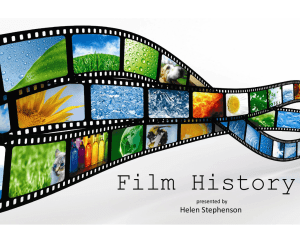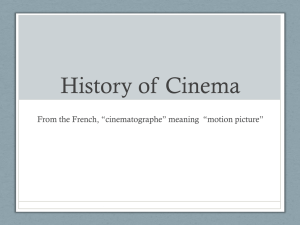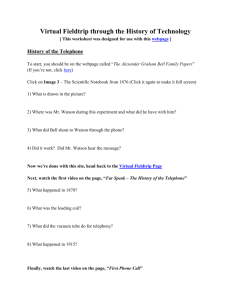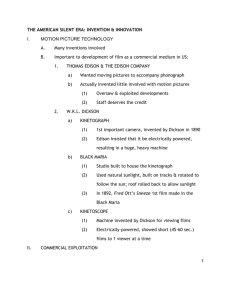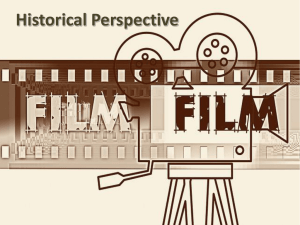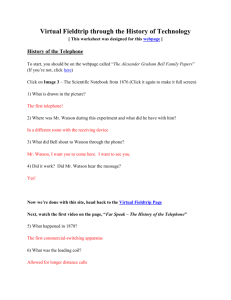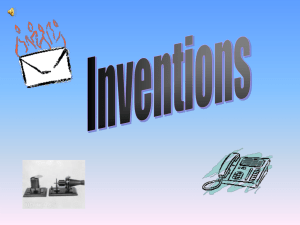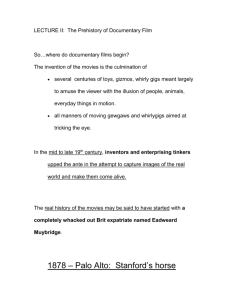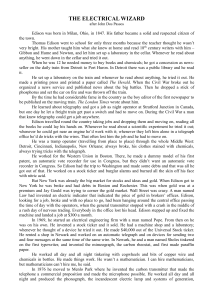Early film (2)
advertisement
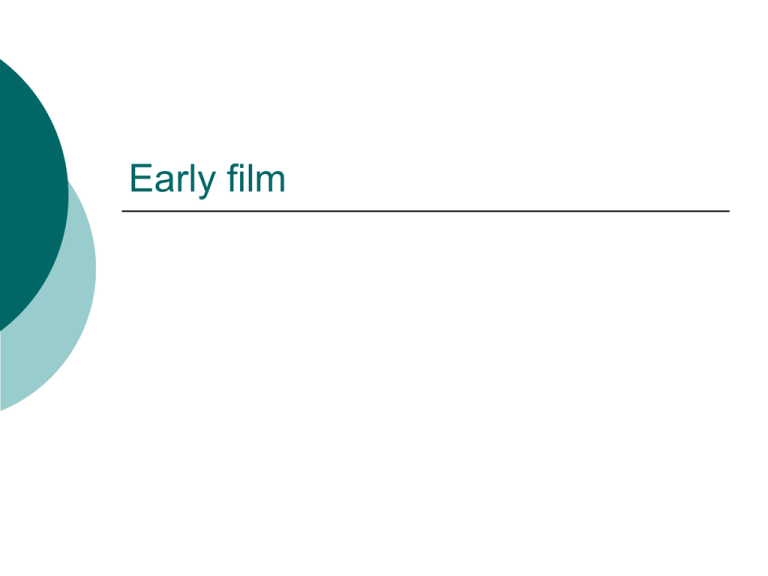
Early film Before Edison, before the camera and before film for projectors was invented… There were many attempts to show moving images. A Magic Lantern It worked by candle with glass slides c.1890 A zoetrope A praxinoscope The Mutoscope worked on the same principle as the "flip book." The cards were attached to a circular core, rather like a huge Rolodex. A reel typically held about 850 cards, giving a viewing time of about a minute. The first films that used movie cameras didn’t have a story. Instead, they would show everyday events such as a fire truck arriving at a fire, or people walking on a city street. Early filmmakers like Edison and the Lumiere brothers saw their work as similar to science. They did “experiments” with their cameras. The next two slides show examples of such early experiments with film. Filmstrip of Butterfly Dance (ca. 1895), an early Kinetoscope film produced by Thomas Edison, featuring Annabelle Whitford Two frames of the June,1894 Leonard– Cushing bout. Each of the six one-minute rounds recorded by the Kinetograph was made available to exhibitors for $22.50. Customers who watched the final round saw Leonard score a knockdown. Charles Kayser of the Edison lab seated behind the Kinetograph. Portability was not among the camera's virtues. Edison’s kinetoscope (after some sound was developed) Inside view of Kinetoscope with peephole viewer at top of cabinet A San Francisco Kinetoscope parlour, ca. 1894–95. 1900–1910 newspaper ad Lumiere brothers Two French brothers who were developing a camera for moving pictures around the same time as Edison. The cinématographe Lumière in filming mode. Movie poster (1896) The cinematograph is a film camera, which also serves as a film projector and developer. It was invented in the 1890s. There is much dispute as to who invented it. Some argue that it was first invented and patented as "Cinématographe Léon Bouly" by French inventor Léon Bouly in February 12, 1892. It is said that, due to a lack of money, Bouly was not able to pay the rent for his patent the following year, and Auguste and Louis Lumière's engineers bought the license. As moving pictures develop, they start to develop stories. A business develops when moving pictures become more and more popular with the public. (silent) movies become very popular at a time when North America had a huge number of new immigrants The fact that movies were silent meant that people did not have to know English to enjoy the show Kinetoscope parlours of the 1890s and the theatres of Vaudeville were eventually replaced by the nickelodeon by the early 1900s. Early movie theatres were called nickelodeons because it cost a nickel (5 cents) to watch a movie. By 1907, a million people a day were going to nickelodeons, fivecent movie houses that showed prepackaged, half-hour programs. And as they say in the movies, “the rest is history!”
